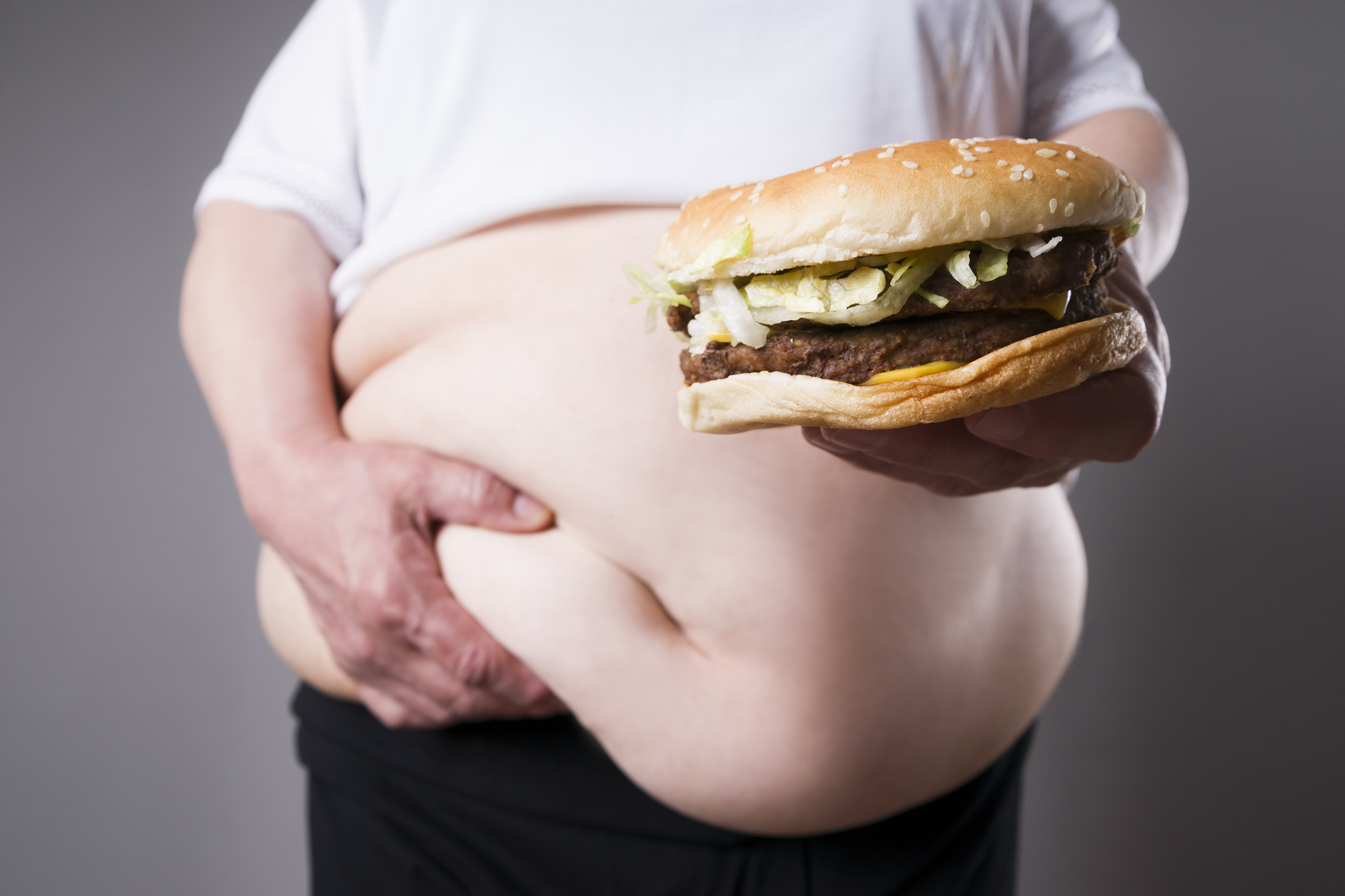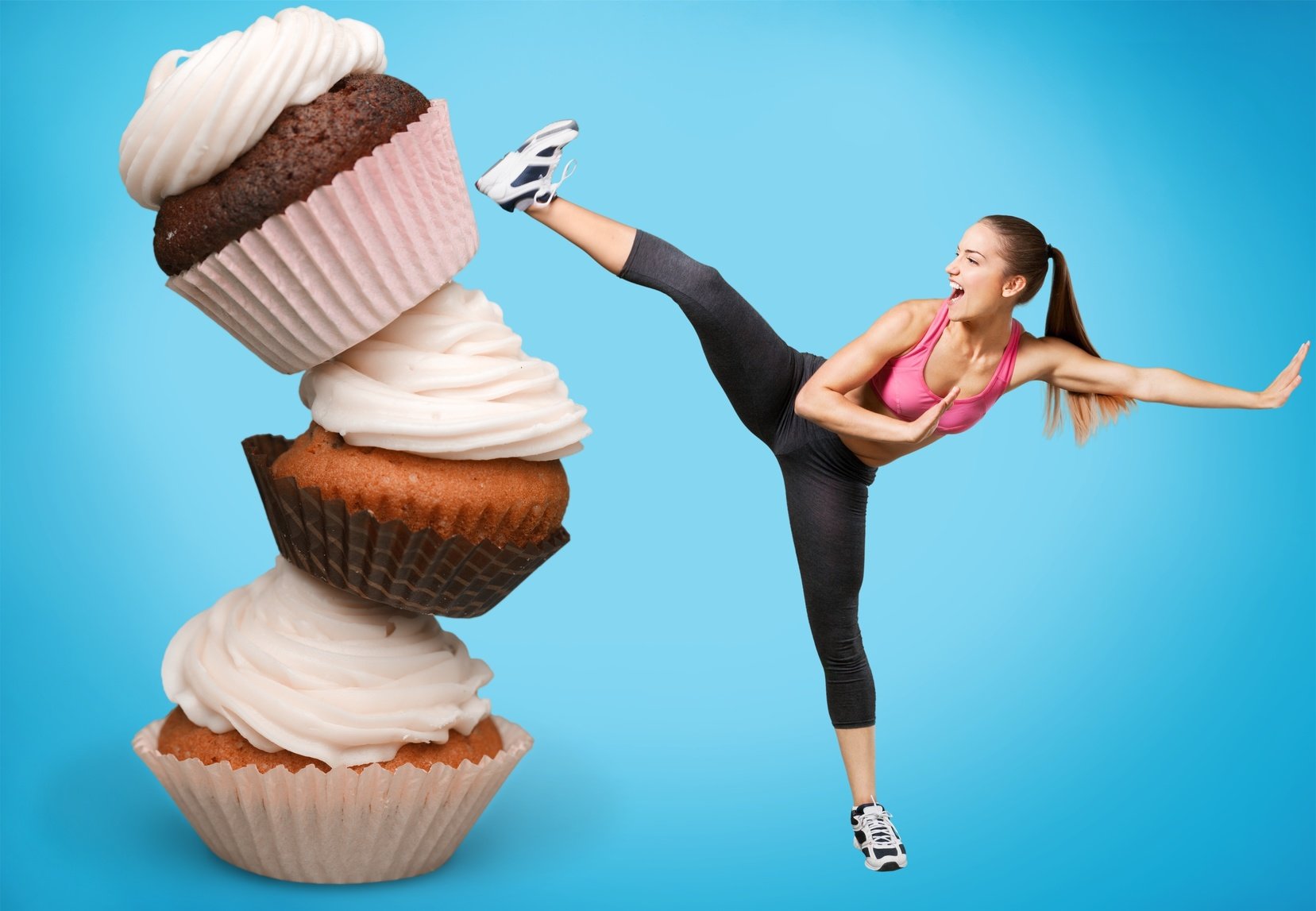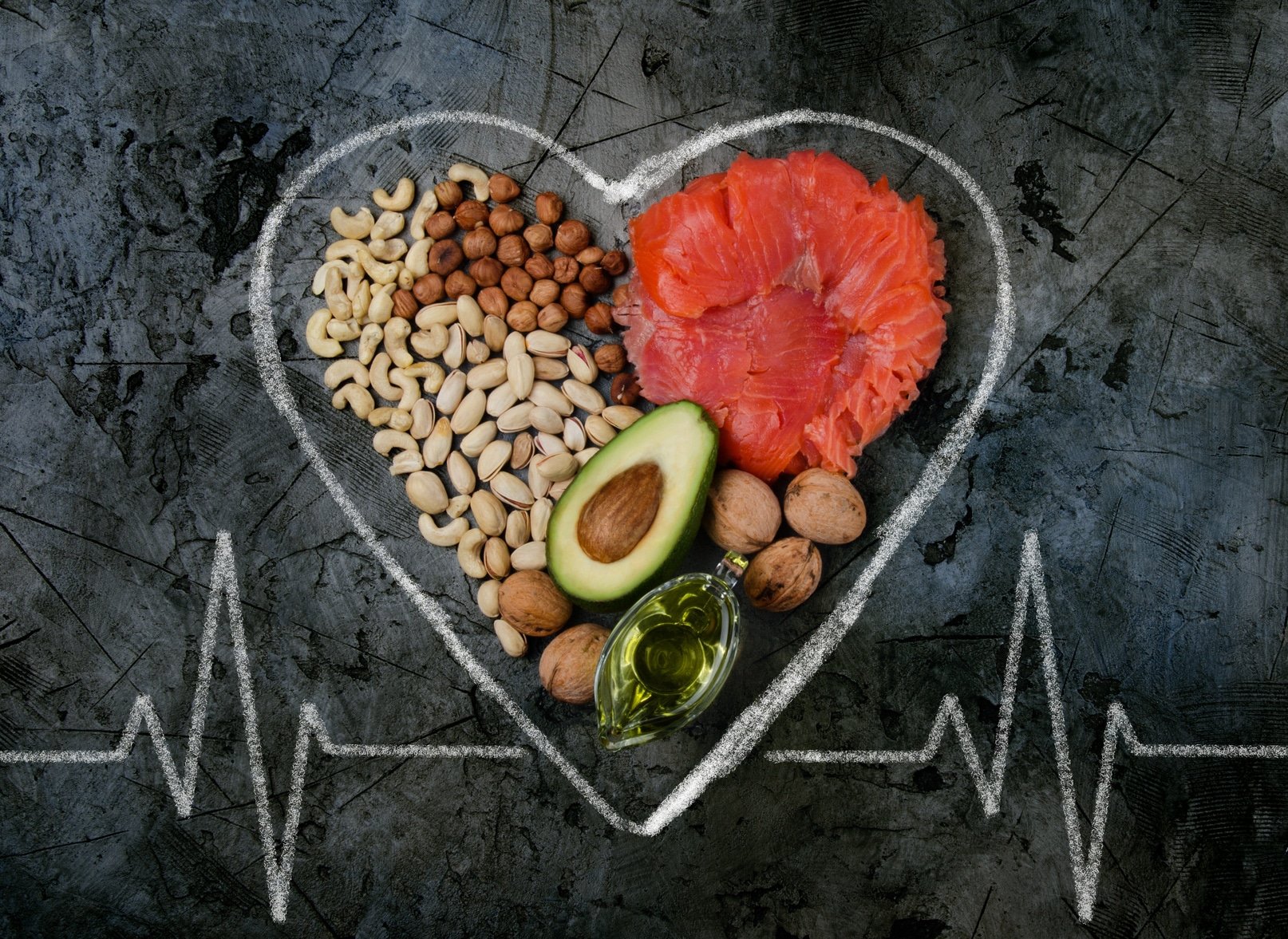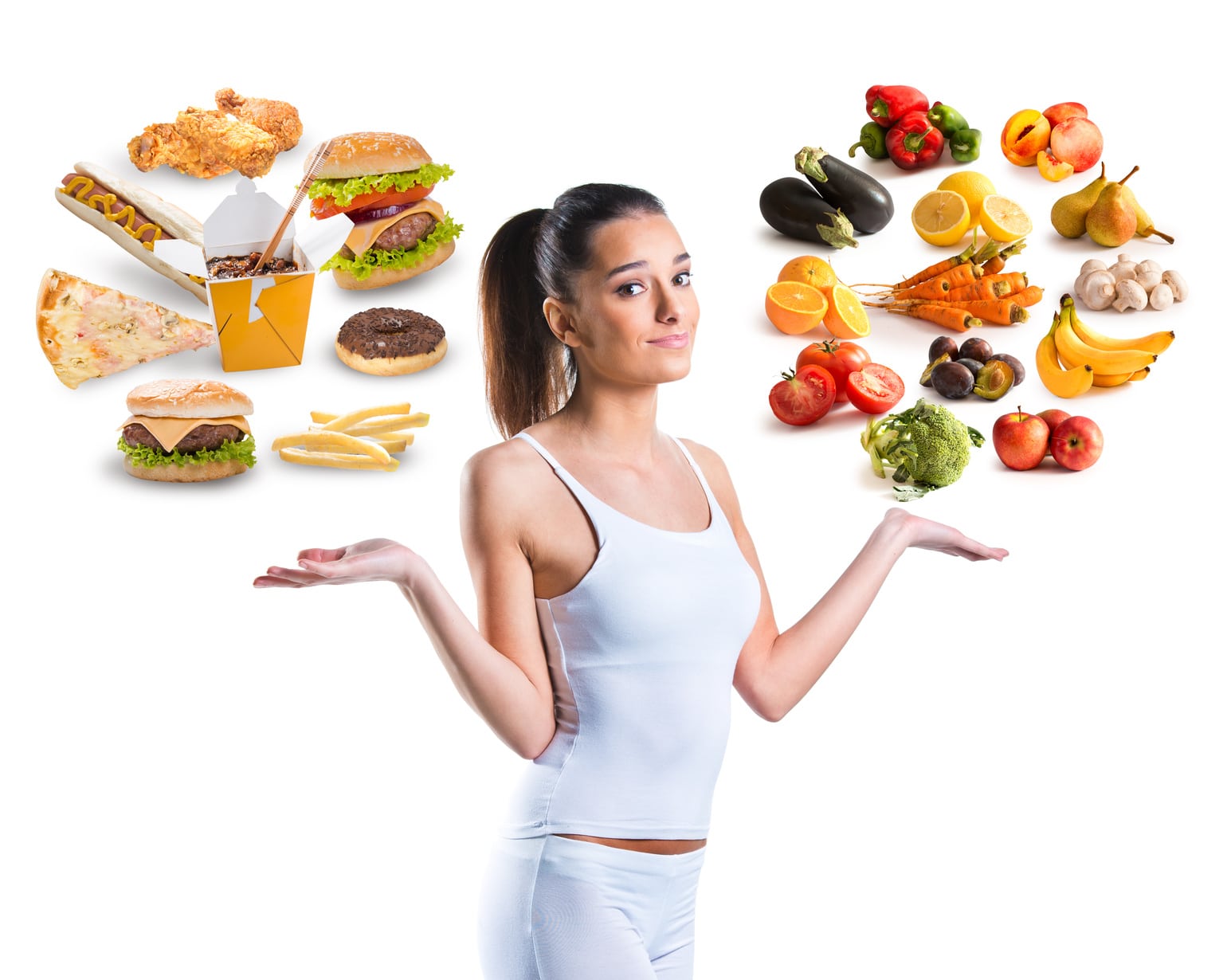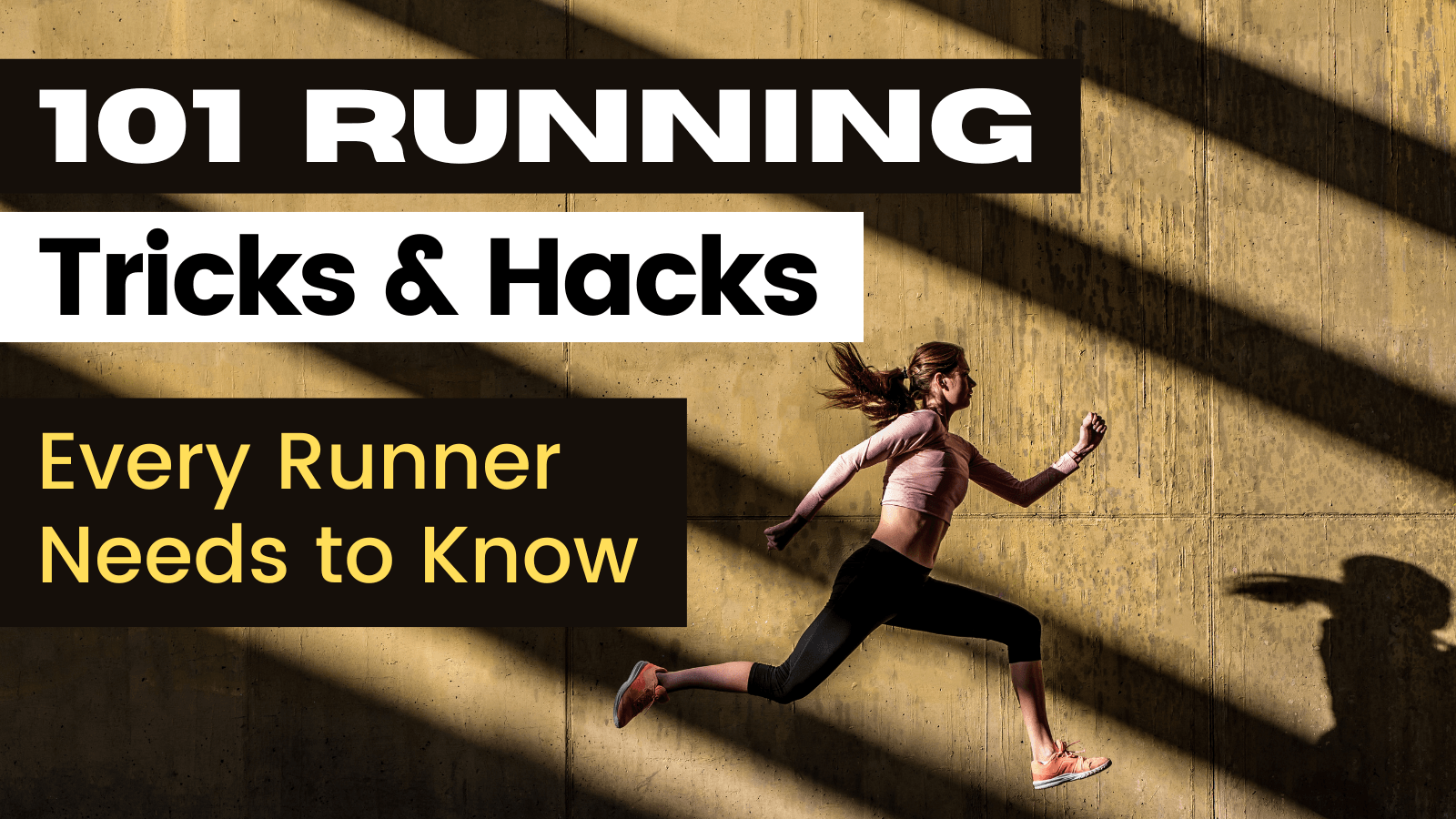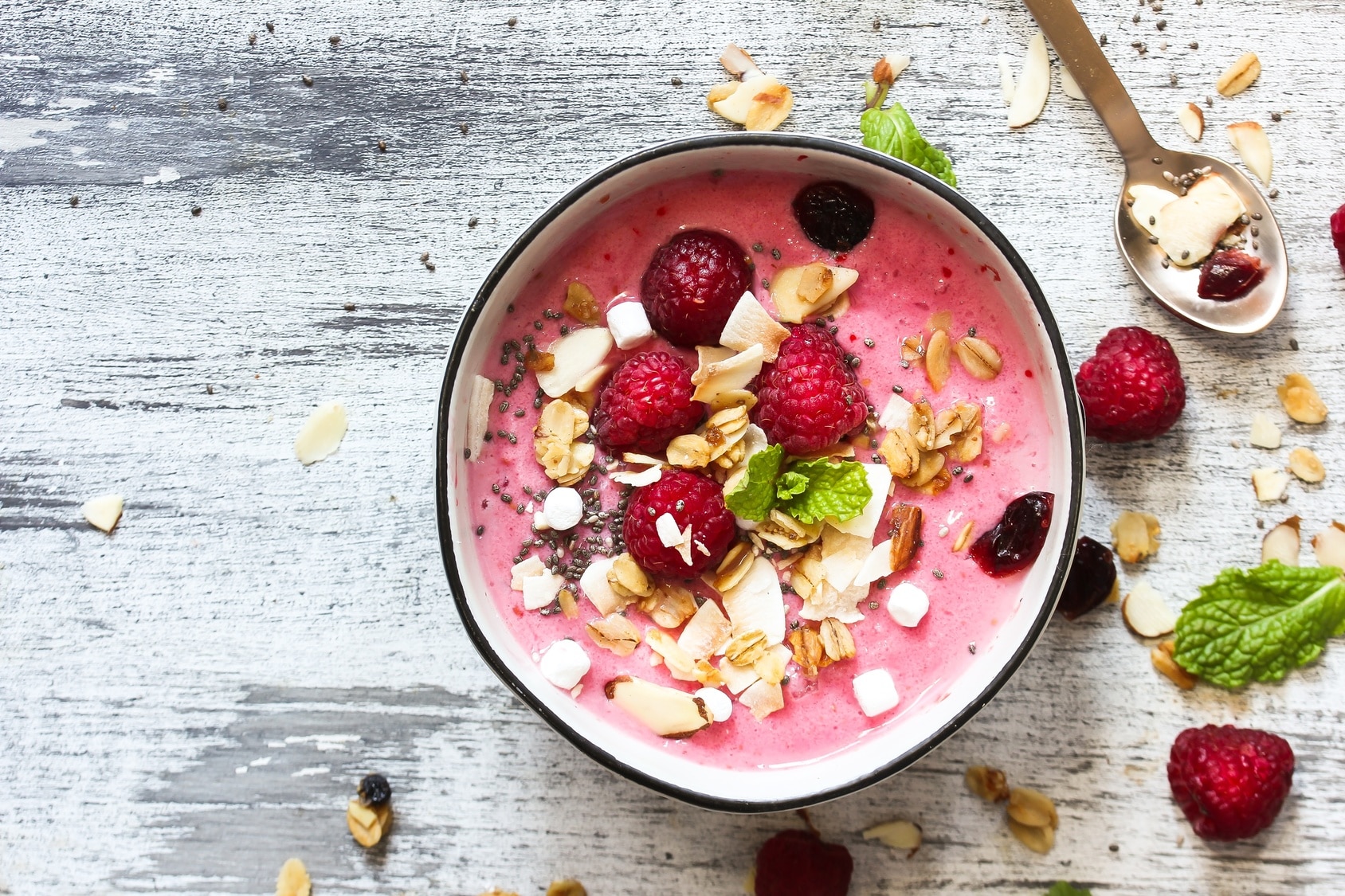You could be logging 40+ miles a week, grinding through speed workouts, hill repeats, the whole nine… but if you’re not fueling right, you’re leaving results on the table.
Or worse — you’re setting yourself up for burnout, injury, and fatigue that just won’t quit.
I cannot emphasize this enough.
I’ve seen it too many times: runners dragging through workouts, constantly sore, wondering why they’re not improving — when the real problem’s not in their shoes, it’s on their plate.
The truth? If you want to train strong, recover faster, and feel good on the run — you’ve gotta get your macros dialed in.
I’m talking carbs, protein, and fat. The big three. The stuff that powers every mile and rebuilds your body brick by brick.
As I always say: you can’t train like a beast and eat like a raccoon digging through a dumpster.
Eventually, the wheels fall off.
But here’s the good news — once you figure out the right macro balance for your body and goals, things change.
You feel more energized, your legs stop feeling like concrete halfway through long runs, and recovery doesn’t take days. Fueling right turns good training into great results.
This guide is your no-BS breakdown of how macros work for runners.
I’ll show you what matters, how to balance your intake for your training load, and how real runners (not just elites) have made massive gains just by fixing their food.
Sounds like a good idea?
Let’s get to it.
Why Macros Actually Matter for Your Running
Your training isn’t just about what you do on the roads — it’s also what you put in your body.
That post-run burrito? It matters. That skipped breakfast before a tempo run?
Also matters. Running burns a ton of energy, and if you’re not refueling with the right stuff, your performance will suffer — period.
Here’s the breakdown of what each macro does for your running game:
- Carbs = Energy + Endurance. They’re your primary fuel source. When you run, your body taps into glycogen (stored carbs) for power. Run out, and boom — you hit the wall. I’ve bonked on long runs before, and trust me, it’s not fun. Want to go longer and faster? Fuel the tank.
- Protein = Recovery + Resilience. Training beats you up. Protein builds you back stronger. You’re not a bodybuilder, but you still need more protein than the average couch potato. It’s how you repair muscle and adapt to training — not just survive it.
- Fat = Long-Term Energy + Hormone Health. Don’t fear fat. Healthy fats keep your joints moving, your hormones balanced, and your energy steady over the long haul. Slash fat too low, and you’ll start dragging… hard.
Here’s the kicker: the right balance of macros depends on your goals.
Running 10 miles a week? You don’t need to carb-load like a marathoner.
Doing high mileage or adding strength work? You’ll need more protein to rebuild muscle and more carbs to keep your legs from dying mid-run.
And no, keto isn’t magic for runners. If you’re going low-carb and wondering why your speed workouts feel like death, now you know why — fast running runs on carbs.
There’s a time and place for tweaking macros, but most runners feel better (and run better) with a solid mix.
Macro Basics: Start With This
You don’t need to count every gram to make this work — but knowing the general balance helps.
Here’s a solid starting point for most runners:
| Macronutrient | % of Daily Calories | Why It Matters |
|---|---|---|
| Carbs | 55–65% | Main fuel for runs – keeps glycogen stocked and energy high |
| Protein | 15–20% | Repairs muscle, boosts recovery, helps keep you lean |
| Fats | 20–25% | Long-term fuel, hormone support, reduces inflammation |
That’s the general playbook — but your mileage may vary (literally). Some runners thrive on 50% carbs. Some need closer to 70%, especially during marathon training.
Research on endurance athletes shows that protein needs might be higher than the old-school low-protein plans suggested — some coaches now recommend 20–25% protein for runners, especially if you’re doing strength work too.
Use these ranges as a baseline, then adjust based on how you feel.
- Dragging on tempo days? Might need more carbs.
- Feeling sore for days? Bump up the protein.
- Feeling low-energy and hungry all the time? Check your fats.
Quick Macro Tip: Calories Still Matter
Each macro brings calories with it:
- Carbs = 4 calories/gram
- Protein = 4 calories/gram
- Fat = 9 calories/gram
If you’re trying to lose weight while running, you’ll need a slight calorie deficit — but don’t starve yourself. Runners who cut too hard end up under-recovered, injured, and cranky.
And if you’re trying to build strength or muscle, you need a calorie surplus, but again — that doesn’t mean pounding pizza all day. It’s about smart fueling.
Carbs for Runners – How Much You Really Need (and Why It Matters)
Let’s cut to it: you need carbs to run well. Period.
I know there’s a ton of diet noise out there—keto this, low-carb that—but when you’re clocking miles and chasing goals, carbs are your fuel.
Whether you’re running 10 miles a week or gearing up for a marathon, the amount of carbs you need depends on how much you’re training, how hard you’re pushing, and what your goals are.
And yes, body weight matters too—sports nutritionists often break it down by grams of carbs per pound of body weight.
Here’s the no-BS rundown:
Runner Type vs. Carbs Needed
| Runner Type | Carbs/Day (Approx.) | Grams per Pound of Body Weight |
|---|---|---|
| Beginner (light training) | 250–350 g (100–140 lb person) | ~2.5–3.5 g/lb |
| Marathoner/High Mileage | 400–600+ g (150+ lb runner) | ~4–6 g/lb |
| Strength + Running Combo | 300–500 g (varies by workout load) | ~3–4 g/lb |
| Low-Carb/Keto (not ideal for speed) | <150 g/day (some under 50g) | ~0.5–1.5 g/lb |
If you’re running 50 miles a week, 600 grams of carbs a day is not crazy—it’s necessary.
That’s how you keep your glycogen stores full and your legs from feeling like cement. Some endurance guides recommend even more during marathon peak weeks—up to 12 g/kg (around 5 g/lb).
Yeah, that’s a lot of carbs. And it should be.
Now, if you’re more of a casual runner—say 15 miles per week—you’re probably fine with around 2.5 to 3 grams per pound.
Just don’t fall into the trap of underfueling. Happens all the time.
Best Carbs for Runners (aka What to Eat)
Not all carbs are built the same.
Some give you slow, steady fuel. Others hit fast and keep you from bonking mid-run.
Here’s the breakdown:
Complex Carbs (for Everyday Energy)
- Whole Grains: oats, brown rice, quinoa, whole grain bread/pasta
- Why: slow-digesting = longer-lasting energy + nutrients
- When: use them in your regular meals—especially dinner the night before a long run
Starchy Veggies (Underrated Power Carbs)
- Sweet potatoes, white potatoes, squash, corn, peas
- Why: nutrient-dense, potassium-rich, great for muscle recovery
- When: recovery meals, lunch or dinner
Fruits (Quick & Easy)
- Bananas, apples, oranges, berries, dates, raisins
- Why: natural sugars + hydration + antioxidants
- When: pre-run snack, mid-run fuel (bananas or dates are clutch)
Legumes (Fuel + Fiber)
- Lentils, beans, chickpeas
- Why: high in carbs and protein
- Heads up: high fiber—don’t overdo right before a run unless you want tummy trouble
Fast Carbs (During Workouts)
- Gels, chews, sports drinks, pretzels, gummy bears
- Why: easy-digesting sugar = mid-run fuel
- When: long runs or races—aim for 30–60g of carbs per hour
Carb Timing = Performance Timing
Here’s how to think about it:
- Before a run: Stick with simple carbs. Think toast, banana, or a bagel—low fiber, easy to digest, high energy.
- During a long run: Fast sugar. Gels, chews, dates, sports drink. Your body wants quick fuel here.
- Post-run/recovery: Go back to complex carbs + protein. A meal like brown rice, veggies, and chicken works wonders.
One marathoner I coached swore by half a bagel with honey at mile 10 on long runs. She called it her wall-buster. Every week, same routine. It worked. Sometimes performance is as simple as what snack keeps you moving.
Thinking of Going Low-Carb?
Look, some ultra runners can pull it off. They go low-carb, burn fat, and move slow and steady for hours. That’s a different game.
But for most runners—especially if you want to run fast or feel good while training—carbs are essential.
Dropping carbs too low wrecks your energy, your recovery, and your motivation. Not worth it unless you’re testing a specific diet for medical reasons or under supervision.
If you’re dragging on runs, before you blame your shoes, check your plate. Sometimes the simplest fix is to eat more carbs.
Don’t get me wrong. I go keto a couple of times per year but I always do it during my off season. Trying to Pr a half marathon on low carb is never a good idea.
Protein: Your Recovery Insurance Policy
Let’s talk about the most overlooked macro in the running world—protein.
Yeah, we all hear about carbs.
Carb-loading before the long run, pasta parties before race day… that’s old news.
But protein? That’s your after-the-run main player.
It’s what repairs the damage, rebuilds the muscle, and keeps your body from falling apart when the miles add up.
I call it recovery insurance. Without enough protein, your body’s stuck running on empty when it comes to muscle repair.
You’ll feel it, too—extra sore, dragging during your next run, or worse, breaking down muscle just to keep you moving. That’s a one-way ticket to burnout.
Why Runners NEED More Protein (Yes, Even You)
Let’s break this down like I would after a long run debrief:
1. Muscle Repair and Rebuild
Every time your feet hit the ground, you’re doing micro-damage to your muscles. That’s normal. That’s training. But you need protein—amino acids—to stitch those fibers back together, stronger than before.
And we’re not just talking biceps here. We’re talking quads, hamstrings, glutes, calves, core—the real running engine room.
2. Prevent Muscle Loss
If you’re running a lot and not eating enough (which happens a lot), your body can start breaking down your own muscle for fuel—especially if your carb stores are low. That’s a brutal combo. Enough protein helps stop that.
It tells your body: “Hey, we’ve got building blocks—no need to start eating ourselves alive.”
3. Strong Bones & Connective Tissue
Protein isn’t just about muscle—it’s about bones, tendons, and even immune function. Skip the protein, and you’re flirting with stress fractures, tendon issues, and never-ending colds.
Your body needs those amino acids to rebuild—not just after workouts, but constantly.
4. Energy Backup (in a pinch)
You don’t want to burn protein for fuel—it’s not efficient.
But during super long runs or fasted efforts, your body will tap into it. Having a solid protein base helps keep you stable when your glycogen tank starts flashing empty.
Truth: Most Runners Feel Better on More Protein
Less soreness. Faster recovery. More consistent energy.
There’s legit research backing this up: athletes who eat more protein recover better, get fewer injuries, and can handle more training volume. Period.
Why So Many Runners Fall Short
Because the running world still lives in the carb era.
Look, carbs are fuel—no argument there. But recovery needs protein, and most folks aren’t getting enough.
And let’s be real: high-protein foods can be filling. If you’re not intentional about it, you’ll fall short.
The fix? Learn your target, spread it out, and hit it consistently.
So, How Much Protein Do You Really Need?
Let’s skip the science jargon. Here’s what matters—base it on your body weight, and match it to your training.
| Training Level | Daily Protein Target |
|---|---|
| Light Running | 0.6–0.8g per lb (1.3–1.7 g/kg) |
| Intense/High Mileage | 0.8–1.0g per lb |
| Muscle Gain / Strength Focus | 1.0–1.2+g per lb |
Example: If You Weigh 150 lbs
- Casual running? Aim for 90–120g/day
- Marathon training? Shoot for 120–150g
- Strength + running? Push closer to 150–180g
That’s not just a coach’s opinion. World Athletics, top sports dietitians, and the research all land in that 0.6 to 1.1 g/lb range for endurance athletes.
Pro tip: You don’t need to be exact. Just listen to your body.
- Always sore?
- Tired all the time?
- Struggling to bounce back after workouts?
That’s your cue to bump your protein.
One easy fix? Add one extra protein-rich snack a day for a week—see how you feel. Most runners notice a difference fast.
Spread It Out—Don’t Cram It In
Here’s a mistake I see a lot: folks eating one massive steak at dinner and calling it a day.
Doesn’t work that way.
Your muscles can only take in so much protein at once (roughly 20–30g per meal). The rest? You’re not absorbing it efficiently.
Better to spread it across the day—like this:
- Breakfast: Eggs, Greek yogurt, or a protein smoothie
- Snack: Nuts, jerky, or a protein bar
- Lunch: Chicken, tofu, beans—whatever works
- Dinner: Fish, lentils, cottage cheese—you name it
You don’t need to count grams obsessively. Just make protein a regular guest at every meal and snack, not just the guest of honor at dinner.
Best Protein Sources for Runners
Let’s get one thing straight—if you’re training hard and not eating enough protein, you’re shortchanging your progress.
Protein isn’t just for bodybuilders. It’s your muscle repair crew, your post-run recovery fuel, and the key to not feeling wrecked after back-to-back training days.
So where should you get it? Keep it simple, keep it smart. Aim for complete proteins—those with all the essential amino acids, especially leucine, which flips the switch for muscle recovery.
Here’s where to load up:
Lean Meats
Chicken breast, turkey, lean beef, pork tenderloin—they’re all complete protein powerhouses.
3 ounces of chicken? You’re looking at ~25g of protein for just 150 calories. That’s a solid return.
Easy to cook. Easy to track. Easy on the wallet. Throw some grilled chicken in a wrap, and boom—recovery fuel.
Fish & Seafood
Salmon, tuna, tilapia, sardines, mackerel—great protein, plus bonus points for omega-3s.
You get 20–30g of protein per serving, plus inflammation-fighting fats that keep your joints happy. Alongside these benefits, it’s worth checking resources like https://northcenturypharmacy.com/blogs/news/how-bergamot-can-help-to-reduce-cholesterol to see how other natural options may support overall heart health.
If you’re putting in serious miles, omega-3s are recovery gold. Salmon for dinner once or twice a week? Your knees will thank you.
Eggs
Simple, cheap, and incredibly effective.
One egg = 6g of protein, plus nutrients like B12 and choline.
Egg whites? ~3.5g protein each—basically pure protein with zero fat.
I used to slam hard-boiled eggs after tempo runs. Grab, peel, done. If you’re hungry post-run, toss a few eggs in an omelet with veggies—easy win.
Dairy
Greek yogurt, milk, cottage cheese—don’t sleep on these.
Greek yogurt has 15–20g protein per cup.
Cottage cheese? Slow-digesting casein, great before bed.
Want recovery in a bowl? Greek yogurt + berries + a drizzle of honey = perfect post-run snack.
Plant Proteins
Beans, lentils, tofu, tempeh, edamame, quinoa—plenty of plant-based options out there.
A cup of lentils: ~18g protein.
Tofu: ~15g per serving.
Quinoa’s got ~8g per cup—and gives you carbs too.
Pro tip: Mix and match your plant proteins. Rice + beans = a complete amino acid profile. Plenty of vegetarian runners crush their protein goals with smart combos—and a scoop of plant-based protein powder here and there helps too.
Protein Powders
Let’s not overcomplicate it.
One scoop of whey protein = 20–25g of clean, quick-digesting protein.
Plant-based blends (like pea, rice, or soy) also work, especially for vegans.
Perfect for smoothies, oatmeal, or just shaking it up with water on the go. Don’t rely on powders alone—whole food still wins—but they’re clutch when time’s tight.
When to Eat It?
Post-run, your muscles are screaming for nutrients. Try to get 15–30g of protein within 30–60 minutes of finishing your workout.
That could be:
- A chocolate milk
- A turkey wrap
- A smoothie with whey and banana
- Greek yogurt + granola
Get the protein in. The sooner, the better. But even if you miss that magic window, don’t panic—your total daily intake matters most.
The Macro Runners Forget: Fats (And Why You Need Them)
Let’s talk about fat—the most misunderstood fuel in a runner’s diet.
For years, people thought eating fat = gaining fat.
Runners especially used to avoid it, thinking it would slow them down. Wrong. Fat is fuel, and if you train a lot, it’s non-negotiable.
Here’s why you need to stop fearing fat and start using it to your advantage:
Fat = Long-Distance Fuel
When you’re cruising below 60–65% of your max intensity (aka easy runs, long runs), your body burns a bigger chunk of fat for energy.
You’ve only got limited glycogen (carb stores), but fat? Even lean runners have enough fat on them to fuel hours of low-intensity work.
Your body actually gets better at using fat the more you train—but only if you’re eating enough of it. Want to avoid bonking in the late miles? Train your fat-burning engine.
Hormones Need Fat
Your body makes hormones (like testosterone and estrogen) from cholesterol and fat. Cut your fat too low, and guess what crashes? Hormones.
For female runners, that often means disrupted periods.
For guys, low testosterone. Both lead to poor recovery, weak bones, and just feeling flat. That’s called RED-S (Relative Energy Deficiency in Sport), and it’s no joke.
I’ve seen athletes hit walls, stall their progress, and feel “off” for months—all because they weren’t eating enough fat.
Fat Helps You Absorb Vitamins
You’ve heard of vitamins A, D, E, and K, right? They’re fat-soluble, which means if there’s no fat in your meal, you’re not absorbing them properly.
These vitamins support your bones, immune system, and energy metabolism—all critical for training and staying uninjured.
So that fat in your salad dressing or avocado on toast? Not just delicious—it’s helping your body actually use those nutrients.
Joint Support & Recovery
Omega-3s (from fatty fish, chia seeds, flax, walnuts) are like natural anti-inflammatories. They help reduce soreness, support joints, and improve recovery.
I’ve had runners tell me they felt less creaky after just two weeks of adding salmon or fish oil to their diet. Real results.
Fat = Satiety & Calorie Density
If you’re always hungry, low on energy, or “snacky” after runs, you might be missing fat. It slows digestion, keeps you full longer, and helps stabilize blood sugar.
Plus, it’s calorie-dense—9 calories per gram—so it’s a great way to sneak in more fuel without stuffing yourself.
Example: a couple spoonfuls of peanut butter = ~200 calories. That adds up quick when you’re training hard.
How Much Fat Do Runners Really Need?
For endurance athletes, the target’s pretty much the same as for general health: about 20% to 30% of your daily calories should come from fat.
Most runners I coach end up landing around 20–25%, which is that sweet spot—not too low to screw with performance, not so high that it pushes out carbs.
The official AMDR (Acceptable Macronutrient Distribution Range) for fat is 20–35%. Studies show endurance athletes naturally end up in the 25–30% range without even thinking too hard about it.
If you consistently drop below 20%, that’s when stuff starts breaking down—your energy, your recovery, your hormones.
How to Ballpark It
You don’t need to track every gram unless you’re into that sort of thing. But if you’re the numbers type:
- A 2,500-calorie runner eating 25% fat = 625 calories from fat, or about 70g of fat per day.
- Another method: 0.5 to 1 gram of fat per pound of bodyweight. So a 140-pound runner might shoot for 70–140g/day. Most will hang near the low end unless doing a higher-fat diet.
Again—don’t stress exact grams. Just aim to include some healthy fats in a couple of meals a day, and you’ll be good.
What Kind of Fat?
Not all fat is created equal. Stick with unsaturated fats—they’re the ones that help your heart, joints, and immune system.
Here’s what you want more of:
- Avocados. Loaded with monounsaturated fat, potassium, and fiber. Smash it on toast, blend it into smoothies, or throw slices in a salad. It’s runner fuel.
- Nuts & Nut Butters. Almonds, peanuts, walnuts, cashews. Natural nut butters too (not the sugary junk). Great for snacks, oatmeal, or pre-run toast.
Fun fact: walnuts and chia are rich in omega-3 ALA fats. That’s good stuff for your brain and joints. - Seeds. Chia, flax, pumpkin, sunflower—all fat-packed with bonus minerals. Aztec warriors ran on chia, and if it worked for them…
Pro tip: Soak chia in water to make a gel (chia pudding, anyone?). Ground flax is great in smoothies or cereal. - Olive Oil & Friends. Extra virgin olive oil is basically liquid gold for your heart. Use it for salads, veggies, or light cooking.
Other decent oils: canola, avocado oil, nut oils. Coconut oil? Okay in small amounts—but it’s high in saturated fat, so don’t go guzzling it. - Fatty Fish. Salmon, sardines, trout, mackerel. These are loaded with EPA/DHA omega-3s, which reduce inflammation and might even help with muscle repair. Aim for 1–2 servings a week.
Not into fish? A fish oil supplement can help. - Eggs (Yolk Included). Don’t fear the yolk. That’s where the fat—and the vitamins—are. One or two yolks a day is totally fine, especially if you’re active.
- Full-Fat Dairy (In Moderation). If you digest dairy well, 2% or whole milk, yogurt, or cheese can be great sources of fat + protein.
Chocolate milk post-run? Not a myth—it works. - Dark Chocolate. Yes, really. Go for 70%+ cacao, a few squares after dinner. Cocoa butter contains oleic acid (same fat as olive oil). Plus, you get antioxidants and a mood boost.
What to Limit
- Saturated fat (butter, heavy meat, fast food) → fine in small amounts, but too much can slow you down.
- Trans fats → avoid completely. If the label says “partially hydrogenated,” toss it in the trash.
Timing Matters
Don’t load up on fat right before a run. It digests slow—like, really slow—and can leave your stomach sloshing mid-mile.
That bacon cheeseburger an hour before your tempo? Bad idea.
Keep higher-fat meals for post-run or several hours before you hit the road. Pre-run should be light and carb-focused.
The Biggest Mistake I See?
Cutting fat too low when trying to lose weight. Runners get scared of fat and start eating dry chicken and plain rice five days a week.
Result? They’re hungry, moody, and their recovery tanks.
Instead, keep the healthy fats, and cut back on the junk carbs or extra sugar. Fat keeps you full and helps your body run smoothly—literally and figuratively.
Coach’s Rule of Thumb
- 20–30% fat of total calories is your range.
- Include fat in 2–3 meals per day.
- Focus on quality, not quantity.
- Don’t fear fat—fuel with it.
Macros for Marathon Training: Fuel Like You Mean It
Let’s not sugarcoat it—marathon training will eat you alive if you’re not eating enough to keep up.
Logging serious mileage? Burning 600 to 1,200+ calories in one session? That means your nutrition game better match the workload, or you’ll be running straight into the wall… and it ain’t pretty.
Here’s how I break it down with the runners I coach (and in my own training): Macros matter. A lot.
You’re not just eating to stay alive—you’re eating to run strong, recover faster, and not fall apart halfway through your long runs.
Carbs: Your Ride-or-Die Fuel (~60–65% of Calories)
You’ve heard it before, but I’ll say it again louder for the folks in the back: carbs are your best friend when you’re marathon training.
Why? Because your muscles run on glycogen, and that’s just your body’s fancy name for stored carbs. When you’re doing back-to-back workouts or long runs, your tanks are already running low. You gotta top ‘em off constantly.
Real-world math: If you’re eating ~3,000 calories in peak weeks, you’ll want ~450 grams of carbs (about 1,800 calories). Yeah, that’s a lot of oatmeal, rice, bananas, and bagels—but your legs will thank you.
Pro tip: In the 2–3 days before your longest run of the week, boost those carbs even higher (~4–5g per pound of body weight). That means if you’re 150 lbs, you’re looking at 600–750g over those days. It’s carb-loading, but training-style.
Protein: Repair the Machine (0.8–1.0g per lb)
Marathon training isn’t just a cardio grind—it’s muscle breakdown central. Especially after hill runs, long runs, and intervals.
You need protein to rebuild what your runs are tearing down.
Target range: 0.8–1.0g per pound of body weight. So if you’re 160 lbs, that’s 130–160g protein daily. No need to chug four shakes, but don’t skip it—especially after a long run when your appetite might be MIA.
I’ve had days where I couldn’t stomach a meal right away, so I slammed a quick shake and called it a win. Something’s better than nothing when recovery’s on the clock.
Fat: The Slow-Burner (Keep It ~20% of Calories)
Fat still belongs in your diet. But during peak mileage, you’ll want to keep it on the lighter side to make more room for carbs.
For a 3,500-calorie training day, 20% fat = ~78g. That’s plenty for your hormones, energy, and overall health—but skip the greasy gut bombs before a long run unless you like mid-race pit stops.
Stick with healthy fats (avocados, nuts, olive oil) and avoid turning your pre-run meals into a burger joint.
Carb Loading Before Race Day: Do It Right
Race week? Now’s the time to carb up smartly, not stupidly.
2–3 days out from the marathon, dial up your carbs to 8–12g per kg (around 4–5g per pound) while tapering your mileage. You’re basically stocking your muscles with fuel—packing glycogen into every fiber so you don’t hit the wall on mile 18.
✅ 70%+ of your calories should come from carbs
✅ Spread it out over days—not one giant pasta plate the night before
✅ Keep some protein and a bit of fat in there to stay satisfied and balanced
Think rice, pasta, bread, oatmeal, bananas, low-fiber snacks. This is the time to enjoy carbs without guilt.
Sample Daily Meal Plan for Runners (Real Fuel for Real Training)
Look, I get it. Figuring out what to eat as a runner can feel like guesswork—especially when you’re juggling training, life, and not wanting to crash mid-run.
So let’s make this simple: here’s a sample day of eating that keeps your tank full, your recovery smooth, and your body actually feeling good while you train. This one’s geared toward an active runner burning around 2500–2800 calories—so feel free to tweak the portions up or down depending on your size, goals, and how hard you’re training that week.
The rough macro breakdown?
➡️ ~55% carbs, 20% protein, 25% fat.
In plain terms: fuel, repair, and feel human.
Breakfast (Pre-run Fuel if You’re a Morning Runner)
- 1 cup cooked oatmeal
- 1 banana, sliced
- 1 tablespoon almond butter
- Drizzle of honey
- 1 boiled egg on the side
- Water or coffee (add a pinch of salt if it’s a sweatfest outside)
Why it works: You’re loading up on quick and slow carbs (banana + oats + honey) to refill glycogen from the overnight fast. The almond butter and egg bring just enough fat and protein to hold you over and feed your muscles. It’s light, quick, and perfect pre-run fuel.
“I’ve run thousands of miles on this kind of breakfast. You don’t need anything fancy—just solid fuel.”
Macros (estimates):
- Carbs: ~45g
- Protein: ~12g
- Fat: ~15g
- Calories: ~350–400
Mid-Morning (Post-Run Recovery Snack)
If you did a solid morning session (like 45–60+ mins), don’t skip this.
Option A (ideal):
Smoothie with:
- 1 scoop whey protein or 1 cup Greek yogurt
- 1 banana
- 1 cup frozen berries
- 1 cup almond milk
- Handful of spinach
- Ice
Option B (Grab-and-Go)
16 oz chocolate milk
1 banana
Why it works:
You want 3:1 carbs to protein post-run to kickstart muscle repair and refill the tank. The smoothie nails it. Plus, it hydrates and cools you down. If you’re on the move? Chocolate milk + banana does the trick in a pinch.
“This is when the real gains happen. You recover right, you show up stronger tomorrow.”
Macros:
- Carbs: ~45–60g
- Protein: ~20–25g
- Fat: ~5g
- Calories: ~300–400
Lunch: The Refuel Bowl
Runner bowl checklist:
- 4–6 oz grilled chicken (or tofu)
- 1 cup cooked quinoa
- Spinach or greens
- Cherry tomatoes, cucumbers, shredded carrots
- ½ avocado
- Olive oil + balsamic vinegar
- Side: Apple or orange
- Drink: Water (or electrolytes if you sweat buckets)
Why it works:
This is your repair + recharge meal. You’ve got lean protein, complex carbs, healthy fats, and a pile of micronutrients from the veggies. Quinoa even gives you bonus protein.
“Lunch is where a lot of runners crash and burn. Don’t skimp. Fuel like you mean it.”
Macros:
- Carbs: ~55–60g
- Protein: ~30–35g
- Fat: ~15g
- Calories: ~550–650
Afternoon Snack (Pre-run for PM Runners)
If you’re lacing up for an evening run, eat this 1–2 hours before.
Go-to:
- 1 slice whole-grain toast
- 1–2 tbsp natural peanut butter
- Thin apple slices on top + cinnamon
Swap idea: Half a bagel with jam or a small energy bar.
Why it works:
Quick carbs from the toast + apple = energy. PB adds staying power without slowing you down. It’s the pre-run snack that won’t weigh you down.
“This is the ‘I don’t want to bonk at mile 2’ snack.”
Macros:
- Carbs: ~30g
- Protein: ~6–8g
- Fat: ~8–10g
- Calories: ~250–300
Dinner (Your Main Recovery Meal)
What’s on the plate:
- 5 oz baked salmon
- 1 medium sweet potato (roasted)
- Steamed or sautéed broccoli or veggies (1–2 cups)
- Side salad (greens + cherry tomatoes + olive oil + seeds or nuts)
Why it works:
Salmon = protein + omega-3s, which are like natural anti-inflammatories. Sweet potatoes give you complex carbs + potassium. Olive oil and nuts add healthy fat for recovery and satiety.
“If I had a big day on the roads, this is the dinner that gets me ready to do it again tomorrow.”
Macros:
- Carbs: ~40g
- Protein: ~30g
- Fat: ~20g
- Calories: ~600–700
Evening Snack (If You’re Still Hungry)
Option:
- ½ cup cottage cheese
- Handful of berries
- Sprinkle of chia seeds or teaspoon of honey
Why it works:
Cottage cheese has casein, a slow-digesting protein perfect for overnight muscle repair. If you’re hungry, listen to your body—it’s trying to tell you something.
“I’ve had nights where I wake up starving at 3am. This solves that problem.”
Macros:
- Protein: ~12g
- Carbs: ~10g
- Fat: ~2g
- Calories: ~150–200
FAQ – Macros for Runners
Real Questions. Real Talk. Real Fuel.
Q: How the heck do I start tracking macros?
A: Keep it simple. Download a food tracking app like MyFitnessPal or Cronometer and just log everything you eat for a week or two. That’s it.
You’re not tracking forever. You’re just learning. Most runners have no clue how little protein they’re getting—or how fast fat can creep up. I’ve coached folks who thought they were eating “healthy” but were running on 10% protein and 40% fat. No wonder they felt sluggish.
Start with a baseline:
- ~60% carbs
- ~20% protein
- ~20% fat
Then tweak from there. Plan ahead if you need to—prep high-protein snacks or carb-heavy pre-run meals. After a few weeks, you’ll be able to eyeball your meals like a pro.
Q: What about keto? Can I still run well on a low-carb diet?
A: Look, keto can work for some runners—mostly ultra folks grinding out hours at a slow pace. But for most runners, especially if you’re chasing speed or PRs? It’s a tough road.
Keto drops your carbs to under 50g a day. That’s less than what you’d find in one banana and a piece of toast. Your body starts burning fat for fuel, which sounds cool until you try to rip a tempo run and realize… you can’t.
Research shows keto-adapted runners lose about 5% off their VO₂max speed. You’ve basically taken your top gear and thrown it out the window.
If your goal is just slow distance and you’re okay with running slower, keto might work. But if you want to run hard, recover well, and hit your best times, you need carbs. Period.
If you do test keto, do it off-season, and watch your electrolytes. And know this—it might take weeks to adapt, and you’ll probably feel like trash during that stretch (“keto flu” is real).
Q: Should I eat differently depending on when I run?
A: Absolutely.
Morning runners are starting in a hole—low blood sugar, partially drained glycogen. A little fuel goes a long way.
- Can’t handle food? Try a few sips of sports drink or half a banana.
- No time? Make dinner the night before carb-heavy (think pasta or rice) and add a bedtime snack.
Evening runners have eaten all day—use that to your advantage.
- Have a solid carb-rich meal 2–4 hours before (like a good lunch or solid snack).
- Don’t go into a 6 PM run on an empty tank.
- Watch out for huge, greasy lunches before workouts—your stomach won’t thank you.
Recovery still matters. Evening runners—your post-run dinner is key. That meal fuels your sleep, your muscle repair, your tomorrow.
Q: I’m trying to lose weight and still run strong. How do macros fit in?
A: Don’t starve yourself. That’s rule one.
Create a small deficit—300 to 500 calories below maintenance—and you’ll lose fat without wrecking your runs.
- Keep protein high (0.8–1g per pound of bodyweight). That keeps muscle loss at bay.
- Carbs? Keep ‘em high enough to fuel your workouts—maybe 50–55% of calories instead of 60%.
- Trim a bit of fat, but don’t go below 20% of your calories.
Focus on cutting junk, not fuel.
Skip the sugar bombs, greasy extras, or empty-calorie snacks—but keep your rice, oats, fruit, and protein intact.
Pro tip: Try losing weight in the off-season. During peak training? Eat to perform. Your body will thank you.
Go too low on calories and you’ll feel flat, cranky, injured, and slow. Trust me—been there, coached that.
Q: Do I need to use supplements like protein shakes?
A: You don’t need them. But they can help.
If you’re running out the door after training and don’t have time to whip up an omelet, a protein shake is gold.
20–30g of quick protein post-run can help with recovery. And some runners just aren’t hungry after workouts—liquid calories are easier to get down.
You don’t need carb supplements unless you’re fueling mid-run. In that case, gels, drinks, chews—they’re almost necessary. Try eating brown rice while racing… yeah, not happening.
For everyday nutrition? Stick with real food first.
Use supplements as a backup plan, not your main strategy.
Check labels—some “protein bars” are glorified candy. Make sure what you’re eating matches your goals.
Q: What if I’m not hungry after a hard run?
A: That’s normal. Intense runs kill appetite. But skipping food kills recovery.
Start small:
- Hydrate. Sip water or a light electrolyte drink.
- Then try something easy to stomach: chocolate milk, smoothie, recovery shake.
- Still not into it? Go with cold fruit (watermelon, oranges) and a couple bites of a protein bar. Even yogurt works.
Give it 30–60 minutes, and your appetite should come back. But you’ve gotta get something in that first hour post-run. Set a reminder if you have to.
One runner I coached used to skip lunch after long runs because of no appetite. By dinner? Toast. She was wrecked. We added a recovery shake within 15 minutes of finishing—and her energy turned around fast.
Don’t wait. Rebuild ASAP.
Final Thoughts: Your Fuel = Your Performance
Let’s cut to it: you can’t outrun a crap diet.
You can put in the miles, do all the right workouts, but if you’re fueling like garbage, your results are gonna show it. That’s just how it is. Your body can’t build strength, go long, or recover well if you’re constantly underfed or mis-fueled.
Getting your macros dialed in — carbs, protein, fats — isn’t about counting every crumb or obsessing over numbers. It’s about feeding your engine what it needs to perform.
- Carbs fuel the work.
- Protein builds you back.
- Fat keeps the whole machine running smoothly.
When you get those in check, everything gets easier — your runs feel better, your soreness fades faster, and you start stacking wins again.
Ignore it? You might skate by for a little while — but it’ll catch up. Fast.
Fatigue. Injuries. Soreness that won’t quit. Hormone issues. That low gear you can’t seem to shift out of? That’s your body begging for fuel.
Even elite runners have learned this lesson the hard way. Look at Tina Muir — a pro who lost her period and hit rock bottom because she was underfueling while training hard. It’s a wake-up call: you can’t train like a pro and eat like a bird.
The flip side? Once you fix your fueling, things turn around fast. I’ve seen runners go from dragging through 10Ks to feeling strong start to finish — just by upping their carbs the day before. I’ve seen sore, sluggish athletes bounce back in 24 hours after finally hitting their protein goals.
So here’s what I tell the runners I coach:
- Treat nutrition like training.
- Experiment. Adjust. Pay attention.
This isn’t just science — it’s self-awareness.
Maybe you run better with a little extra fat. Maybe you need more snacks at night. Maybe your long runs only click if you carb up two days before. That’s the process. Learn your body and fuel it accordingly.
And just like your training has phases, so should your nutrition. Off-season? You’ve got more flexibility. Peak training or race week? Tighten it up. More carbs, less alcohol, better sleep. It’s called fueling for the work required — and it works.
One more thing: this isn’t about restriction. It’s about fueling with purpose. Runners eat big, hearty, satisfying meals — because that’s what the work demands. Honestly, there’s nothing better than feeling strong and steady on a run, knowing it came from how you fueled the day before.
Your body’s a machine — and you don’t put cheap gas in a race car.
So next time you think nutrition is “extra,” remember:
The real work starts in the kitchen.
Eat like a runner, train like a runner — and the results will come. Now go eat something solid, then hit that next run like you mean it.
Fuel smart. Run strong. You’ve got this.



